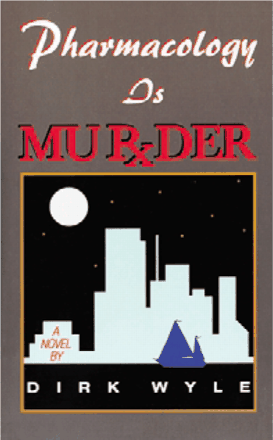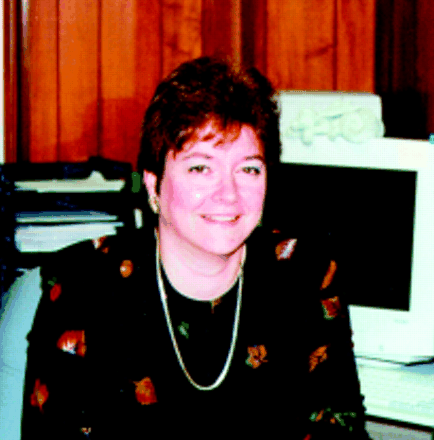Murder on the Syllabus

The pharmacology department of a hypothetical medical school in Miami is the setting for this tongue-in-cheek murder mystery, featuring a cast of characters, from Dean to first-year graduate student, that caricature every idiosyncrasy ever observed in a biomedical scientist. Despite the complete absence of admirable characters—and certainly not because of this absence—most of us will recognize some of the personality flaws displayed by the fictional pharmacology faculty. Indeed, the colleagues that Wyle has created for us must surely represent the largest single concentration of scumbags, bombasts, egotists, idiots, and backbiters ever assembled in one place (at least, outside of Washington DC). But for murder mystery aficionados who also happen to be pharmacologists, this book is a fun read. Despite a story line that is fairly weak at times, the frequent references to pharmacological principles (and pharmacological principals, for that matter) are entertaining, and the descriptions of laboratory environments will be familiar to all readers who have experienced research first-hand.
The story is a first-person narrative by Mr. Benjamin Candidi, twenty-eight-year-old Mensa member and disaffected wunderkind, who has resigned himself, since graduating from Swarthmore, to the monotony of maintaining the analytical instruments of the Dade County Medical Examiner's Office. Candidi changes his dilettante ways, however, when Dr. Charles D. Cooper, the unethical and egotistical, universally disliked, money-grabbing Chairman of the Department of Pharmacology at nearby Bryan Medical School (named after William Jennings Bryan) is found dead, after a faculty lunch, under curious circumstances. Even Candidi's brilliance at manipulating the DCME analytical equipment cannot uncover the cause of Dr. Cooper's demise, although hyperkalemia, massive intravascular coagulation, and purple coloration of the skin all characterize the corpse. Cooper's widow, an epidemiologist (albeit one whose scientific reputation is disputed among the pharmacology faculty), is nevertheless sure that her husband was murdered. Thus, the pressure is on Dr. Geoffrey Westley, British ex-patriot and Chief Medical Examiner, to find out what and who killed Dr. Cooper.

Because Dr. Westley cannot conduct investigations himself, he deputizes Ben Candidi to do so; specifically, Candidi is assigned to investigate the alleged murder by enrolling as a graduate student in the Department of Pharmacology. Not sure what he wants to be when he grows up, Ben enthusiastically accepts the assignment and applies to the Department the week before the fall semester begins. Apparently, Bryan Medical School is so desperate for graduate students (not surprising, in view of the faculty) that they take him with almost no questions asked.
Dr. Westley suspects a toxin, given the constellation of symptoms, and asks Candidi to get him a short list of agents that can be tested. Readers are thus afforded the first of many short and easy-to-understand lessons in pharmacology, as Westley and Candidi compare the abilities of low molecular–weight toxins vs. protein/glycoprotein toxins to be absorbed by the body following oral administration. (The disobliging corpse had no needle marks.)
Performing his obligatory first-year graduate student interviews with the faculty members, Ben learns about their research and assesses their potential for murder, and we get to meet a strange assortment of scientists. We also get some interesting pharmacology lessons on calcium release, pharmacokinetics, and neurotransmission, to name but a few, which offset the annoyance of having to endure coded conversations between Candidi and Westley, contrived so that Candidi cannot be tied to any incriminating evidence. This ploy is so obviously transparent that it is not surprising when, ultimately, no one believes in Candidi's innocence.
The book contains other contrivances. For instance, in addition to rotating through a series of labs in pursuit of the murderous toxin, persistently pumping the faculty for leads, and working on his boat, Ben also finds true love with a medical student. Somehow, I remember having to study a lot more during my first year of graduate school, but then again, I was mercifully spared the task of investigating the nefarious undertakings of the Yale faculty. But I digress.
Lest I give too much of the plot away, let it suffice to say that Ben systematically scrutinizes the various faculty members, starting with the taciturn Dr. Ashton, who works on neurotoxins. But it is serendipity (along with ego) that delivers into Ben's hands the critical clue that implicates the murderer. Again, there is some well-explained pharmacology here, which makes up for the incredibility of the plot. The last several chapters, in particular, have Candidi running from the police (because he does not want to testify in court) and are superfluous to a story that, otherwise, offers a good read. On the whole, the descriptions of Miami are marvelous, the pharmacology is fun, and anyone who has ever done time in academia will appreciate the characters.

- © American Society for Pharmacology and Experimental Theraputics 2001



